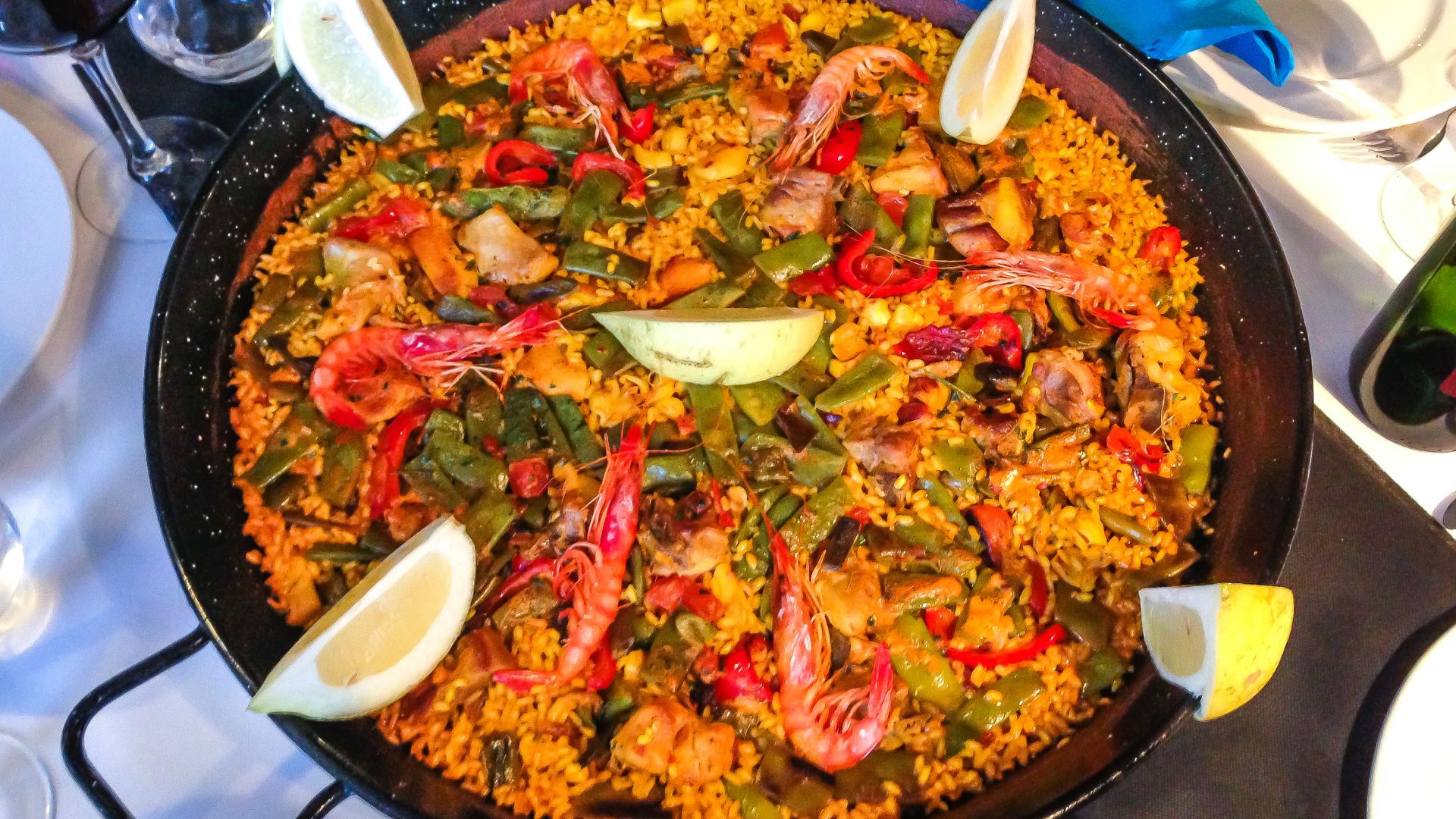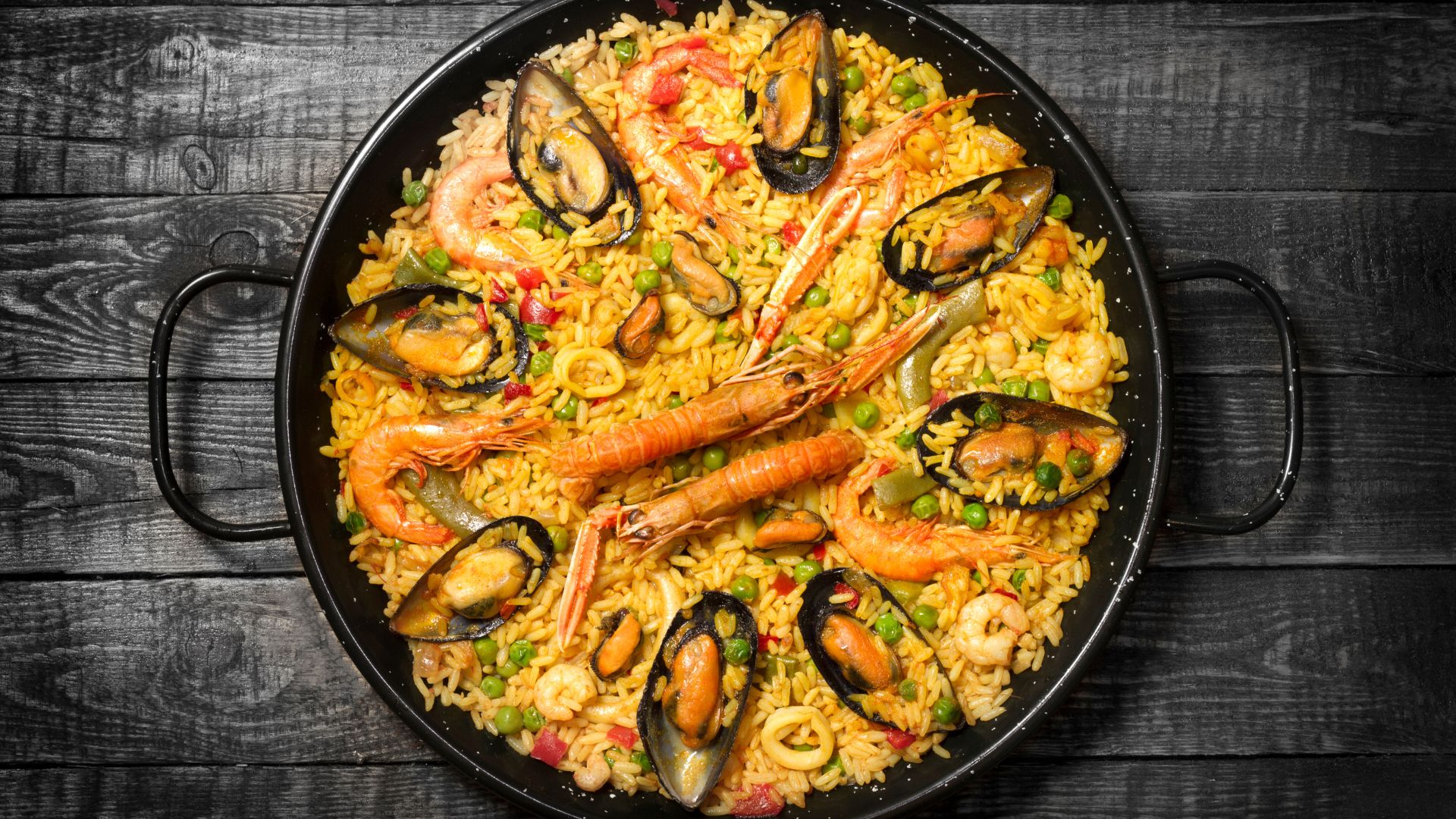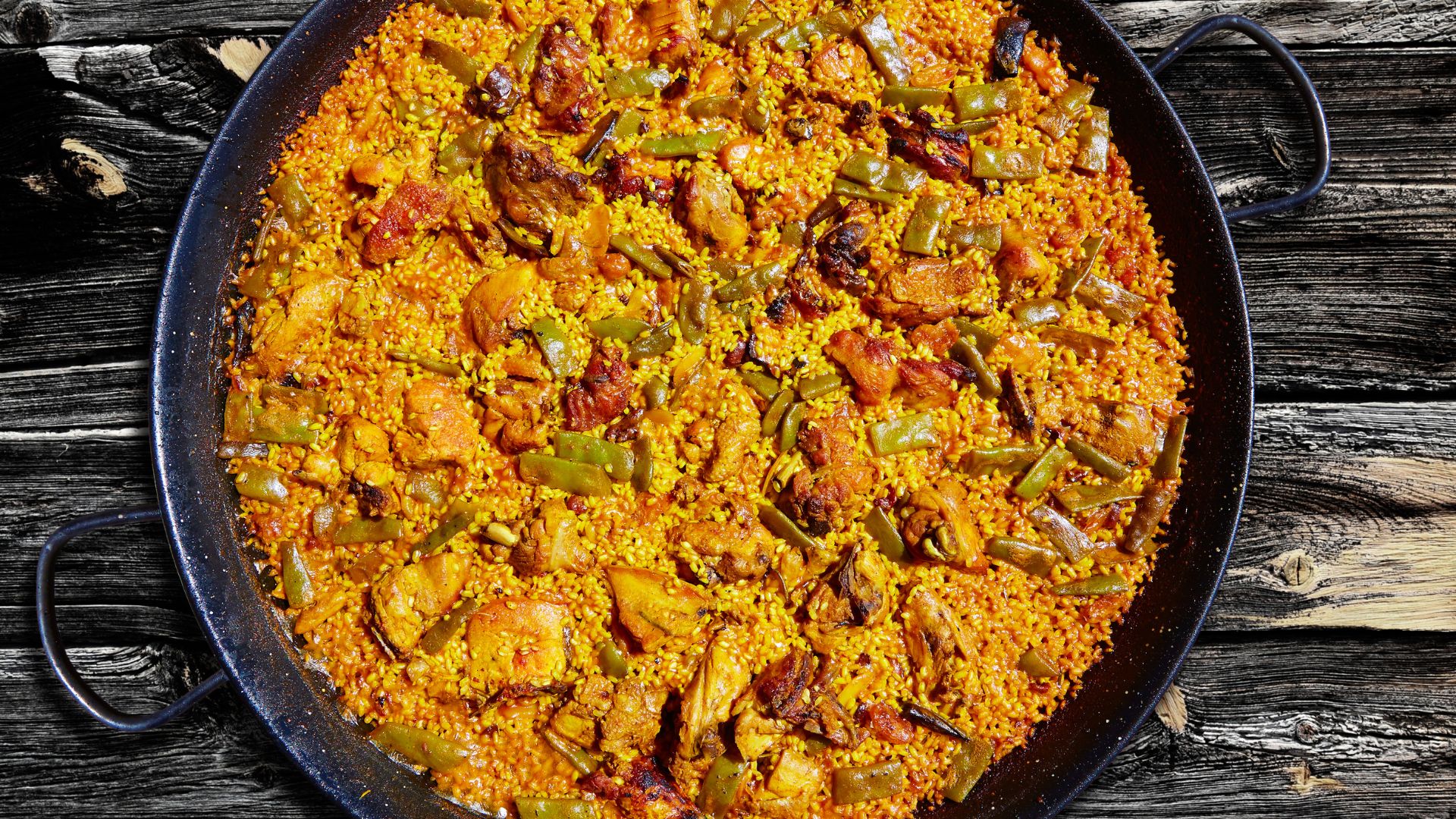Spain’s food scene? It’s a wild ride through flavors that have shaped the country’s spirit for centuries. I’ve wandered from the lively tapas bars of Barcelona to the legendary paella kitchens in Valencia, and honestly, Spanish cuisine feels like a story told around crowded tables—full of laughter, clinking glasses, and memories that stick.
Here are my five culinary adventures—the essential tastes that, in my opinion, define Spain. Tapas, paella, regional specialties, perfect wine pairings, and those irresistible churros with thick chocolate—these dishes aren’t just food, they’re cultural moments. Geography, history, and local quirks all show up on your plate, depending on where you are.
Let’s dive into the traditional tapas culture, iconic paella, coastal and countryside specialties, wine that actually matters, and the sweet treats that just finish off a Spanish meal perfectly. You’ll get to know what to eat, sure—but also how these foods fit into daily Spanish life.

The Heart of Spanish Cuisine: Tapas Traditions
Tapas in Spain? They’re not just small plates—they’re practically a national pastime. People gather, laugh, and linger. I’m convinced the best way to meet locals is by sharing a few of these dishes.
The classics—patatas bravas and jamón ibérico—never disappoint. Madrid and Seville both have their own take on tapas culture, and honestly, you can’t go wrong exploring either.
Must-Try Tapas Dishes
I always kick things off with patatas bravas. Golden, crispy potatoes, spicy tomato sauce, and creamy aioli—simple but so good.
Jamón ibérico is a must. Thin slices of this melt-in-your-mouth cured ham come from acorn-fed pigs, especially in southwestern Spain. Once you’ve tried the real thing, supermarket ham just seems sad.
Gambas al ajillo—shrimp sizzling in garlic and olive oil—arrives at your table still bubbling. You’ll want to mop up every drop with bread.
A few more essentials:
- Chorizo: grilled or cooked in wine, always with a spicy kick
- Tortilla española: thick, hearty potato omelet
- Croquetas: crispy on the outside, creamy with ham or cheese inside
- Pulpo a la gallega: octopus with paprika, so tender it barely needs chewing
Every region throws its own spin on tapas. In the north, pintxos pile up on bread. In Andalusia, you sometimes score free tapas just for ordering a drink.

Best Tapas Bars Across Spain
The most memorable tapas moments? They’ve happened in neighborhood bars where locals crowd the counter and recipes haven’t changed in decades.
In Madrid, Mercado de San Miguel feels like a tapas playground. Casa Lucio’s huevos rotos are legendary. Taberna La Dolores? Pure old-school charm and top-notch jamón.
Seville just oozes tradition. El Rinconcillo claims to be the oldest tapas bar in Spain—since 1670! Casa Morales pours sherry from ancient wooden barrels, and the vibe is unbeatable.
In Barcelona, Cal Pep’s seafood tapas are worth the wait (and there’s always a wait). Quimet y Quimet stacks tiny bread slices with wild flavor combos.
San Sebastián in the north? Pintxos heaven. Bars line the streets with counters full of tiny bites. You just point, eat, and pay when you’re done.
Tapas Culture in Madrid and Seville
Madrid comes alive after work, with locals flocking to bars around 8 PM. People hop between spots in Malasaña and Chueca, each bar specializing in something different. It’s less about dinner, more about catching up over drinks and bites.
Seville? Old-school rules still stand. Many bars hand out free tapas with each drink, and the servings are often bigger than elsewhere. Sherry wine—fino or manzanilla—pairs perfectly with seafood tapas, especially in the city’s endless sunshine.
Both cities treat tapas as a social event. You linger, you chat, you order another round. It’s about the people as much as the food.

Paella and Iconic Spanish Dishes
When people talk about Spain’s food identity, three dishes always come up. Paella, tortilla española, and chorizo—they’re everywhere, and for good reason. They each capture something special about the country’s flavors.
Paella in Valencia
I tasted real paella for the first time in Valencia, and wow, locals take it seriously. The original Paella Valenciana sticks to a strict ingredient list.
You’ll find:
- Bomba rice (short-grain, soaks up all the flavor)
- Saffron for that golden color
- Chicken and rabbit (yes, rabbit—trust me)
- Green beans and garrofón beans
- Tomato and paprika
Watching Valencian cooks make paella is almost hypnotic. They use wide, shallow pans over open flames and refuse to stir after adding the broth.
That’s how you get socarrat—the crispy, toasty rice at the bottom. Purists insist on the original recipe, though most restaurants outside Valencia offer seafood or mixed versions.
The dish cooks in about 20 minutes, then needs a short rest so flavors come together. Don’t rush it.

Tortilla Española
Every Spanish menu I’ve seen has tortilla española. It’s a simple potato omelet, but somehow, it’s magic.
You only need:
- Eggs
- Potatoes
- Olive oil
- Salt
I’ve watched cooks argue over onions—some regions say yes, others say no way.
The trick is to slowly cook thin potato slices in lots of olive oil until they’re soft, not browned. Then you mix them with eggs and cook in a smaller pan.
Flipping the tortilla is the scary part. Most people use a plate to turn it over, and the center should stay a little creamy.
It’s good hot, cold, for breakfast, lunch, or dinner. Honestly, I could eat it every day.
Spanish Chorizo Specialties
is nothing like the Mexican kind. Spain’s versions come in two main types.
Chorizo seco is cured, firm, and ready to slice for tapas or sandwiches. Smoky, a little spicy, thanks to pimentón (Spanish paprika).
Chorizo fresco needs cooking. People add it to stews like fabada asturiana or just cook it in wine.
The paprika gives it that signature red color and smoky flavor. Every region seems to have its own twist.
| Chorizo Type | Texture | Best Uses |
|---|---|---|
| Seco | Firm, sliceable | Tapas, sandwiches |
| Fresco | Soft, cookable | Stews, grilled dishes |
The best chorizo I’ve tasted came from tiny villages, where families still cure it the old-fashioned way.

Regional Culinary Adventures: A Journey Through Spain
Every Spanish region brings its own flavors to the table. The Basque Country, Galicia, Catalonia, and Andalusia all have food traditions you just can’t find anywhere else.
Basque Country and Pintxos
The Basque Country treats food like high art, especially with pintxos. These aren’t just appetizers—they’re creative, tiny masterpieces.
In San Sebastián, pintxos bars line the streets. Each has its specialty, and hopping from bar to bar is basically a sport.
Classic pintxos:
- Gilda (anchovy, olive, and pepper on a skewer)
- Tortilla española on bread
- Bacalao al pil pil (cod in garlicky olive oil)
The region has a reputation for innovative cooking, with loads of Michelin-starred restaurants. Chefs mix tradition with modern flair.
I always order a glass of local Txakoli wine—lightly sparkling, crisp, and the perfect match for rich pintxos.
Galician Flavors and Delicacies
Galicia sits right on the Atlantic, so seafood rules here. Every menu bursts with the freshest catches.
Pulpo a la gallega is the star. Octopus, paprika, olive oil, and chunky salt—it’s simple, but unforgettable.
Local fishermen haul in shellfish like percebes (gooseneck barnacles) and vieiras (scallops) every morning. Markets buzz with the day’s catch.
Albariño wine from Rías Baixas is the go-to. Crisp, bright, and made for seafood.
Galicia also makes killer cheese. Tetilla stands out with its creamy texture and odd little cone shape.

Catalonia’s Culinary Distinctiveness
Catalonia’s food blends Mediterranean ingredients with French techniques. The result? Dishes you won’t find anywhere else in Spain.
Pa amb tomàquet is as simple as it gets—bread rubbed with garlic and ripe tomato, finished with olive oil and a sprinkle of salt.
The region loves mixing sweet and savory. Mar i muntanya dishes (sea and mountain) combine seafood with meat—think chicken with lobster.
Catalonia’s olive oils, especially from Siurana, add a peppery punch to everything. I always make time for Barcelona’s markets—La Boquería is a feast for the senses.
Andalusian Tastes and Traditions
Andalusia’s sweltering summers shaped its food. The region specializes in cold soups and grilled seafood that help you beat the heat.
Gazpacho—cold tomato soup with bread, olive oil, and vinegar—started as peasant food. Every family swears their recipe is best.
Jamón ibérico from acorn-fed pigs is a point of pride here, especially in Huelva and Córdoba.
Andalusian fried fish (pescaíto frito) is everywhere on the coast. The secret? A light flour coating that lets the fish shine.
Sherry wine from Jerez, ranging from bone-dry to syrupy sweet, pairs beautifully with the region’s food.

Spanish Wine and Beverages: The Perfect Pairing
Spanish wine culture runs deep. I’ve sipped bold Rioja reds, toasted with bubbly Cava, and discovered sherries that completely changed my mind about fortified wine.
Rioja and Spanish Red Wines
Rioja is Spain’s wine superstar, and for good reason. The Tempranillo grape dominates, producing reds bursting with berry flavor and smooth tannins.
I usually grab a Crianza Rioja for everyday meals—aged for two years, it’s great with jamón ibérico or grilled meats.
Reserva Riojas, aged longer, bring more complexity. They’re perfect with hearty stews like cocido madrileño.
Other regions surprise me, too. Ribera del Duero’s reds are powerful—amazing with roasted lamb. Jumilla wines from the southeast are bold and fruity.
Cava and Sparkling Options
Cava deserves way more love. Mostly made in Catalonia, Cava uses the same method as Champagne but brings its own Spanish character.
Cava’s crisp bubbles cut through fried dishes like patatas bravas and croquetas. I love how the acidity resets your palate.
Brut Nature Cava skips the sugar, so you get pure, mineral notes—fantastic with seafood tapas like gambas al ajillo.
For celebrations, I go for Gran Reserva Cava. These bottles age for at least 30 months and develop those toasty, yeasty flavors that are incredible with aged Manchego cheese.

Sherry from Andalusia
Sherry from Andalusia stands out as one of Spain’s most distinctive wine experiences. You’ll find an incredible range of fortified wines in Jerez, each with its own food-pairing magic.
Fino sherry is bone-dry and has this salty tang that always surprises me. I love ordering it with olives and Marcona almonds at a lively tapas bar—something about that nutty flavor just clicks with those snacks.
Manzanilla comes straight from Sanlúcar de Barrameda, where the ocean breeze leaves its mark. I always reach for this style when I’m eating fresh seafood by the coast.
Amontillado brings a bit more body and this gorgeous amber color. I usually pair it with jamón or a wedge of aged cheese—can’t go wrong there.
Pedro Ximénez is the dessert sherry, no question. It’s rich, sweet, and tastes like raisins in a glass. Sometimes I’ll have it with a Spanish dessert, but honestly, it’s so good I’ll sip it solo as a treat.
Sweet Conclusion: Churros and Spanish Desserts
Let’s talk Spanish desserts. They’re the perfect way to wrap up a meal, and churros con chocolate is the uncontested champion. Every region brings something different to the table, and you can taste the history in every bite.
Churros con Chocolate
Churros in Spain aren’t just dessert—they’re a social ritual. I remember the first time I dipped a fresh churro into thick, molten chocolate. Suddenly, I understood why locals gather in churrerías at all hours.
These golden sticks are crispy on the outside, tender inside. Traditionally, folks eat them for breakfast, dunking them into a mug of hot chocolate that’s so thick, you could almost eat it with a spoon.
In Madrid, I stumbled upon churrerías everywhere. Each one had its own spin, but all served up fresh, piping-hot churros.
Making them sounds simple, but it’s an art. The dough goes through a star-shaped tip and straight into bubbling oil. Once they’re golden, a quick dusting of sugar or cinnamon finishes the job.
Modern twists? Oh, they exist:
- Cream-filled churros
- Chocolate-stuffed versions
- Wild toppings that go way beyond sugar
And the hot chocolate? Forget watery cocoa. This stuff is like drinking velvet—thick, rich, and deeply chocolatey.

Signature Sweets from Across Spain
Spain’s dessert scene is way bigger than just churros. Each region has its own specialties, and locals are fiercely proud of them.
Crema catalana from Catalonia is like crème brûlée’s spicy cousin, with cinnamon and lemon zest. I love cracking through that caramelized sugar top with my spoon.
Galicia brings us tarta de Santiago, a moist almond cake dusted with the cross of Saint James in powdered sugar. It’s centuries old and officially protected—pretty cool, right?
Flan pops up everywhere, but each place does it a little differently. The silky custard and caramel sauce just melt away on your tongue.
Arroz con leche is Spain’s take on rice pudding. Every family has their own version, but it always comes with rice, milk, sugar, and a hit of cinnamon.
Tarta de queso is Spanish cheesecake, but don’t expect a crust. It’s super creamy, almost like a mousse, and honestly addictive.
Frequently Asked Questions
Spanish food traditions can be a mystery at first—meal times, tapas, and all those unwritten rules. I’ve picked up a few things along the way that might help you dive in.
What are the top-rated food tours in Spain for a truly authentic dining experience?
If you want a real taste of Spain, “A Taste of Spain” tours are a solid bet. They’ve been at it since 1999, running private culinary adventures that feel personal and immersive.
You get small groups—sometimes just two people—and hands-on experiences like cooking classes, market strolls, and tapas crawls in cities like Madrid.
I loved exploring local markets with a guide who actually knows their stuff. You’ll see the freshest ingredients and pick up cooking tips you’ll want to take home.
Can you list some typical mealtime customs in Spain that might surprise a visitor?
Meal times in Spain run late—seriously late. Lunch usually happens between 2 and 4 PM, and dinner rarely starts before 9 or 10 PM.
Breakfast is nothing fancy. Most people grab toast with tomato or a small pastry and coffee.
The siesta is still a thing in some places, so don’t be shocked if shops close between 2 and 5 PM.
Tapas come out before dinner as a social thing. Locals hop from bar to bar, sampling little plates with friends and drinks in hand.
What is considered Spain’s national dish and what makes it unique?
Paella Valenciana holds the crown for Spain’s most iconic dish, though it’s 100% a Valencian creation. The real deal has chicken, rabbit, snails, tomatoes, and saffron for that classic golden hue.
Cooks make it in a wide, shallow pan over an open flame. The best part? The crispy rice layer at the bottom called socarrat—people fight over it.
Outside Valencia, you’ll see all sorts of paella, but sticklers know the original recipe is sacred and has barely changed in a century.

What are tapas, and how should they be enjoyed according to Spanish tradition?
Tapas are small bites, served with drinks and meant for sharing. The name actually comes from the old habit of covering your drink with a piece of bread.
Order a few, mix and match, and voilà—you’ve built a meal. Favorites include olives, cheeses, jamón, and all sorts of cooked treats.
Traditionally, people stand at the bar, socializing and moving from place to place. Tapas aren’t meant to be rushed. The whole point is to slow down and connect over good food.
How did Spanish exploration of the Americas influence Spain’s culinary scene?
Spanish explorers brought back tomatoes, potatoes, and peppers from the Americas, which totally transformed Spanish cooking.
Now, tomatoes are essential in gazpacho and loads of tapas. Potatoes star in classics like patatas bravas and tortilla española.
Chocolate made the trip too, and Spain embraced it. That’s why churros and thick hot chocolate are such a classic combo.
These new ingredients blended with old Mediterranean staples, creating the rich, varied Spanish cuisine we know and love today.
What are some can’t-miss desserts in Spain for those with a sweet tooth?
Alright, let’s talk about churros first. You’ll spot these golden fried dough sticks everywhere, especially in the morning or late at night after a long stroll through Spanish streets.
Spanish churros usually come plain—none of that cinnamon-sugar coating you might expect if you’ve tried the Mexican kind. The real magic happens when you order churros con chocolate.
You get a mug of thick, warm chocolate for dipping, and trust me, the combo of crispy outside and pillowy inside is dangerously good. I’ve lost count of how many times I’ve gone back for seconds.
Flan deserves a mention too. It’s creamy, silky, and not too sweet—kind of like crème caramel but with a Spanish twist.
Every region in Spain seems to have its own take on flan, sometimes using local flavors or ingredients. It’s always fun to try a new version in a different city.
Spanish pastries are a whole adventure by themselves. Wander into any local bakery and you’ll find trays of seasonal sweets, often made with whatever fruits or nuts are freshest in the area.
Some of these treats are only available during certain festivals or holidays, so keep an eye out. It’s worth popping into a bakery just to see what’s on offer—you never know what you’ll discover.

